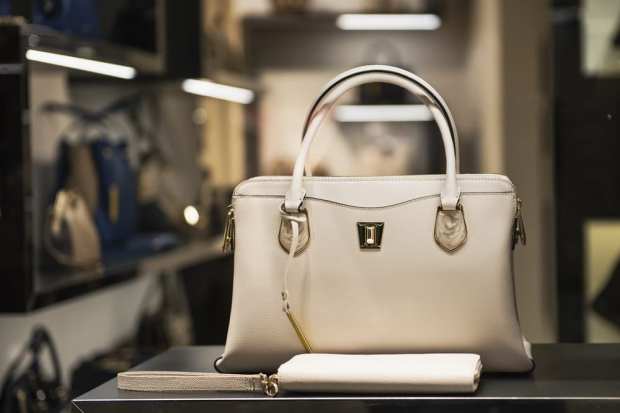Inside Rebag’s Rent-To-Resell Luxury Handbag Model

Supposedly, we live in a disposable society, a place where products are thrown away instead of maintained, repaired and kept for years (or, in some cases, handed down to relatives).
No doubt that is true to a large extent, but not so much when it comes to luxury goods. Consumers tend to have a much harder time parting with items that were expensive to purchase, those with a quality and look that verge on the artistic. Designer handbags, for instance, often live long, if unproductive lives, tucked away in closets following an initial use period — after trends have shifted and newer items have been acquired for that very reason.
Solving for that problem — essentially putting that inventory back to work — served as the foundation for a recent PYMNTS discussion between Karen Webster and Charles Gorra, CEO and Founder of Rebag, a marketplace where consumers can buy and sell their used luxury handbags.
“It’s a surprisingly big market,” Gorra told Webster of the opportunity. “These [designer] bags are very iconic. They are very unique items that consumers over-invest in, and they retain value very well.”
Yet, unlike other marketplaces, Rebag buys the inventory from consumers, then resells it to those who want to pick up a gently used, but still-in-excellent-condition, Hermes Birkin or a double-flap jumbo Chanel bag for well less than the cost of a new one. Gorra told Webster that taking possession of the inventory gives Rebag the ability to deal directly with the buyer, and create a better buying experience.
That better buying experience, he explained, ranges from flexibility on pricing to, more recently, the introduction of a new subscription business model that essentially rents the bag to a buyer for six months, and offers a trade-in for 70 percent of the original purchase price as a store credit to buy the next one.
Gorra said this rent-not-to-own model keeps consumers inside the luxury handbag ecosystem, with that money earned from the old handbags used to finance purchases of newer ones. It has also given Rebag a new path to serving luxury handbag brands with a white-label version of the model (more about that in just a bit).
The PYMNTS conversation took place as the company, launched four years ago as an online-only firm, announced that it has raised $25 million in fresh capital, and will continue its push into physical retail.
No Thrift Store Here
These days, he said, “being an owner is not as important as having access to a product,” a trend fueled by such factors as millennial coolness to traditional notions of ownership, and increasing focus on sustainability across multiple industries and areas of life. “We have some very powerful trends [shaping] this mindset,” Gorra added.
Designer handbags are, perhaps, Exhibit A of this trend — a status purchase, an item that not only reflects the buyer’s taste in high-level fashion, but marks certain turning points in life (college graduation, first job, big raise, etc.). The best handbags also function as collectors’ items, and one need not be a hoarder to eventually accumulate enough of those items to fill multiple closet shelves, as handbag purchases continue with new fashion seasons and achievements in one’s life.
As one can imagine, those handbags can be difficult to get rid of, both emotionally and pragmatically (think of the price paid). Mere marketplace resales might not bring enough revenue potential for someone looking to clean out that closet.
That’s were Rebag comes in.
Gorra told Webster that less than 10 percent of luxury goods owners are currently active in the resale market. That means 90 percent of them are, in his words, part of the market that remains “under water,” much like the bulk of an iceberg. “We are getting those bags back into the system,” he said for those first-time buyers of the brand.
Ecosystem Expansion
The idea behind Rebag is not just limited to sales of used handbags that the company buys from consumers. The larger concept is to make those consumers part of the overall ecosystem of luxury goods, by providing a process through which resales on Rebag can essentially “finance the next season” when it comes to future handbag purchases.
“It’s about being able to get more income” that can go toward future handbag purchases, he said. By providing a resale process (one backed by the level of quality control possible when the retailer owns the inventory), Rebag can make for itself a pivotal role in the luxury space.
“The next frontier” for use, he explained, was working closely with brands and retailers to further encourage consumer investment in their handbags, and to develop and offer financial tools to keep those purchases going. In a way, the process would be like trading in a used car when buying a new one. “We are acting as product discovery for the brands,” he said. “We are a customer acquisition channel for the brands.”
Store Mindset
Those who buy handbags — even used ones — are usually willing to pay bigger-ticket prices to make those purchases. According to Gorra, the average ticket price for online sales via Rebag is “over $1,000. In stores, it’s even more.”
Rebag operates five stores in total, in New York City and Southern California, with plans to open more. Physical is an increasingly important channel, Gorra said for Rebag — buyers, particularly of luxury goods like handbags, want the option of an in-person store experience, even if what they are buying is used.
“There used to be a belief that you could be 100 percent online,” Gorra said. “Everyone realizes now [that] that’s not optimal.” When it comes to the business of luxury handbag resales, the key is not so much about stores as it is about positioning a company as a “specialist,” and with an offering so free of friction that it feels like its own little luxury.
